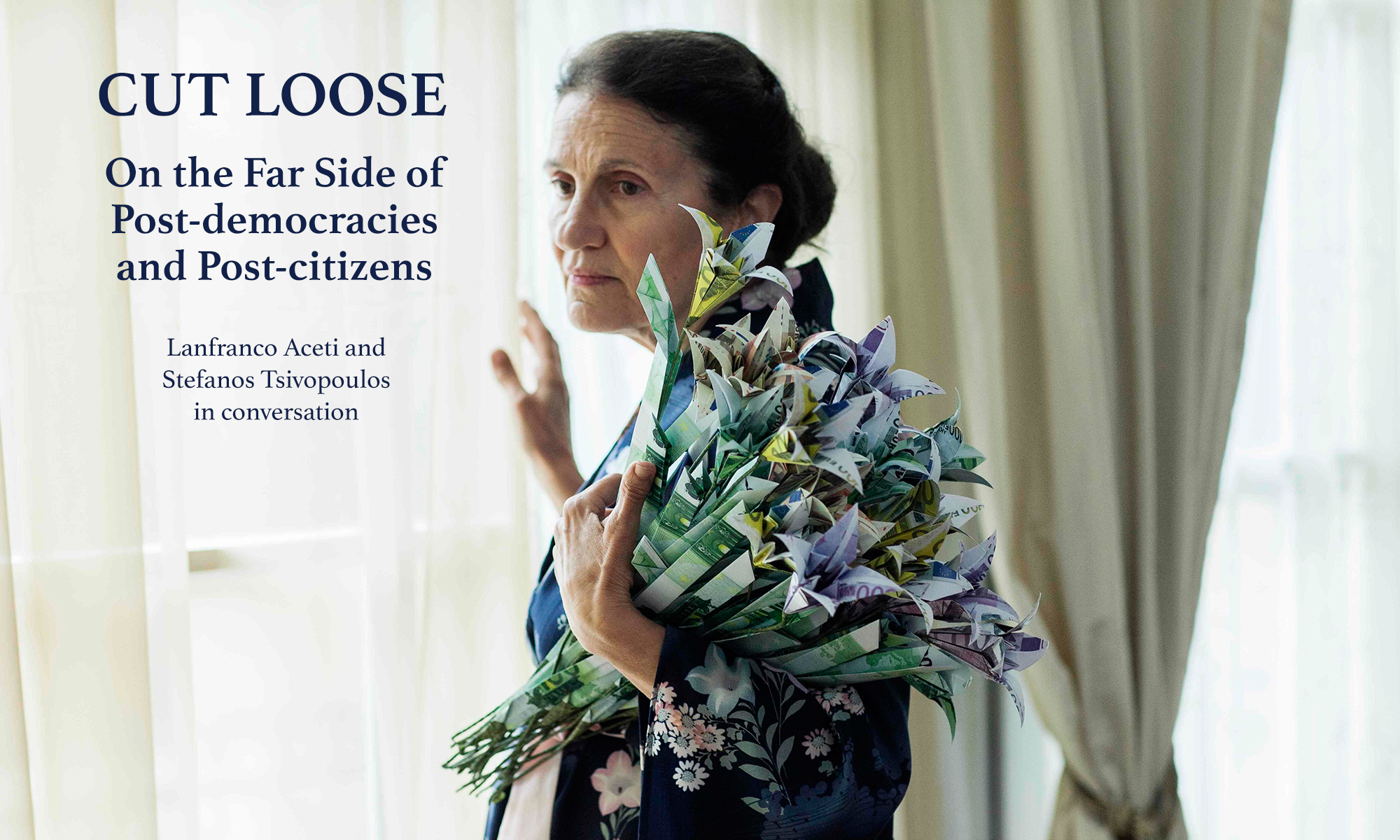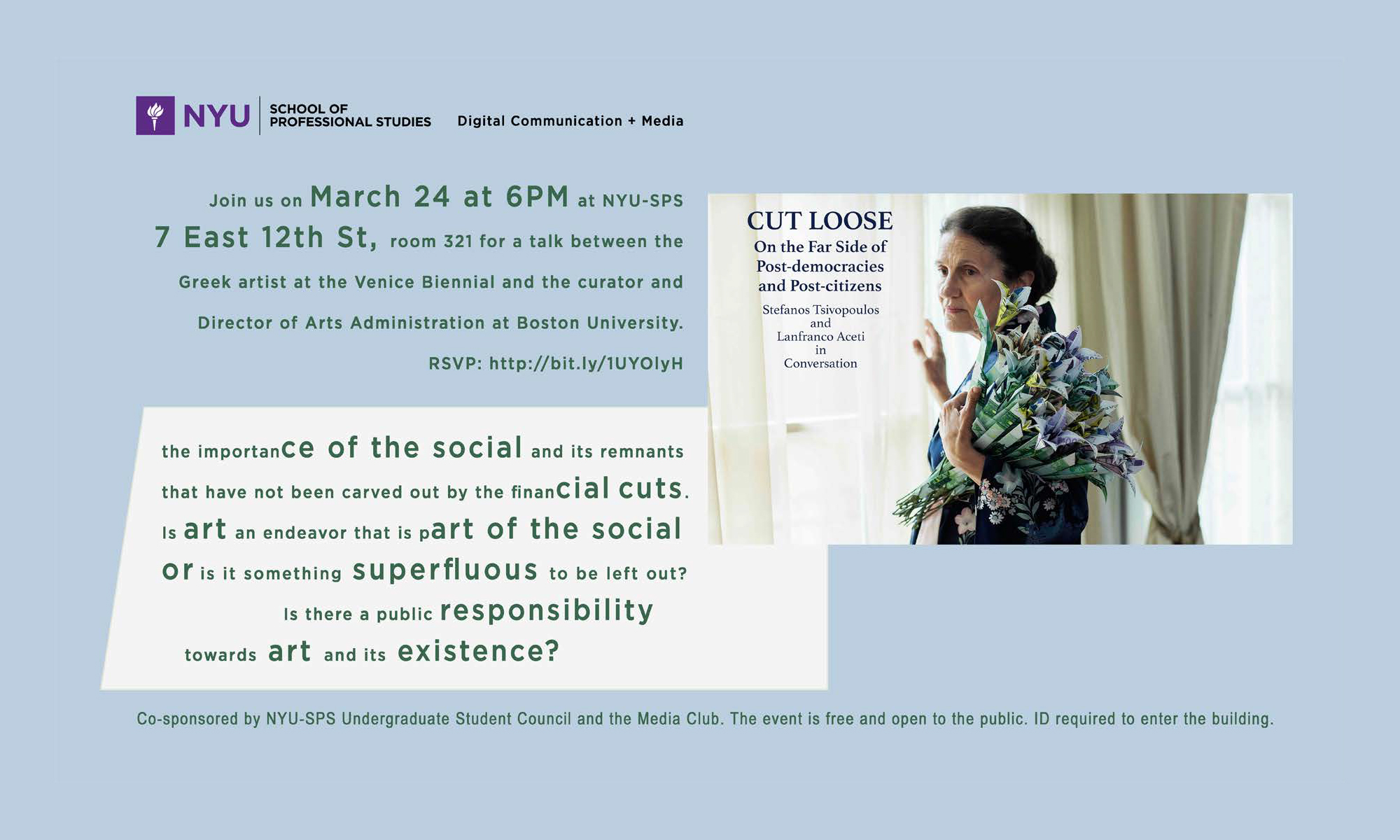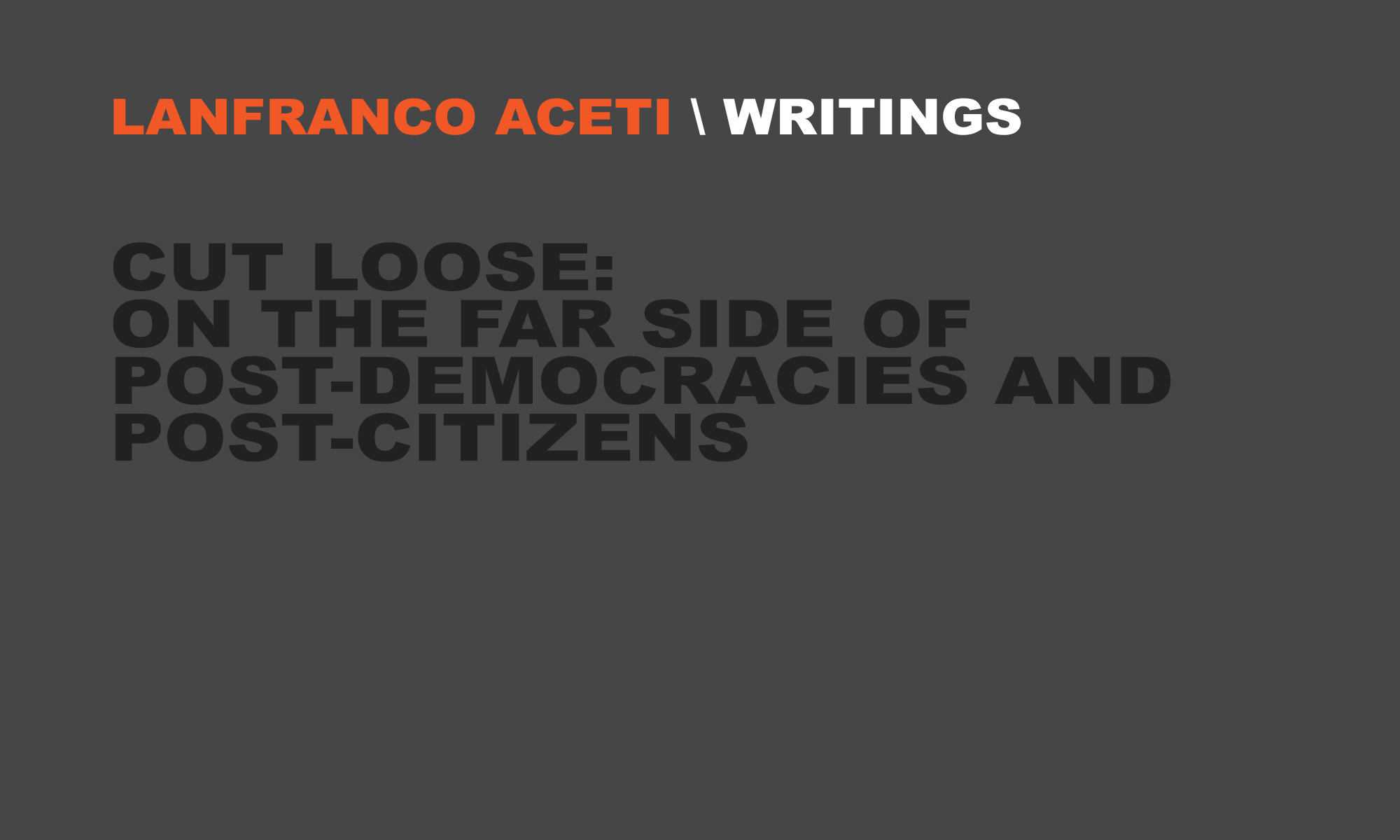If you happen to be in New York on March 24 I am having a conversation at New York University with Stefanos Tsivopoulos (who represented Greece at the 55th Venice Biennale 2013). The event is chaired by Mechthild Schmidt Feist. Join us on March 24 at 6pm, at NYU-SPS 7e12 street, room 321. Please RSVP here to guarantee a seat: https://bit.ly/1UYOlyH – there are limited seats and they will be allocated on a first come first served basis. Please bring a form of ID. The talk follows the publication of an issue I have edited for the Journal of Visual Culture titled CUT.
The conversation stems from a new essay that I have been writing and that looks at the conflicting relationship between citizens and state hierarchies as consequence of the financial and social crises. This will also be a chance to talk with Tsivopoulos about his recent new artwork Archive Crisis: Shaking Up the Shelves of History and the current socio-political unrest in Greece, Europe and the United States. Tsivopoulos’s artworks have been selected for numerous international solo and collective exhibits and he represented Greece at the 55th Venice Biennale 2013, Curator Syrago Tsiara. Tsivopoulos’s film-based works are investigations into the rift between reality and its fictional reconstruction in both film and memory. He is most interested in the subjective interpretation of history and the idea of a mediated reality, which he alludes to through allegories and rhetorical narratives. Tsivopoulos’s subjects typically borrow from Czechoslovakian and European history; he has, in fact, used found and archival footage from 1960s television programs in his own works, as well as images of the equipment and technology used to create the original programs and fictitious sets made to resemble TV studios of the era. In presenting these episodes, Tsivopoulos often creates immersive, multi-channel installations.
Image: Stefanos Tsivopoulos, ‘History Zero’ (2013), video still. Courtesy: Kalfayan Galleries, Athens – Thessaloniki.
CUT LOOSE: ON THE FAR SIDE OF POST-DEMOCRACIES AND POST-CITIZENS
ABSTRACT
“But I cannot excise from my mind the thought that as much as contemporary post-democracies (so far entrenched in their post-existence of democracies that almost appear as pre-dictatorships) can cut one out, so post-citizens can cut themselves out of the social body of these post-democracies.”
This is a phrase that did not make the article for the themed issue of the Journal of Visual Culture CUT. It was cut out and left it on the side to be used some where else, at some other point in time.
By taking as a starting point CUT, the themed issue of the Journal of Visual Culture and this phrase that did not make ‘the cut,’ the essay will debate the importance of the social and its remnants that have not been carved out by the financial cuts.
How much is it possible to cut before a nation state ends? Is art an endeavor that is part of the social or is something superfluous to be left out? Is there a public responsibility towards art and its existence and representation as imaginaries of the multiple components of the social body? Or contemporary corporate art has substituted the nation state and has become the homogenizing and homogenous coolant representing instances and identities of the corporate post-democratic nation state?
As societal conflicts deepens and the role of art becomes increasingly political, the imaginaries and the mythologies that should keep the body of the state unified are failing and flailing, questioning the consequences of the divisiveness of previous politics. It is in this context of conflicts, divisions and social injustices that a specific section of contemporary art operates – moving away from shining representations of objects and society and instead engaging with the complexity and obfuscated aesthetics of a period of profound global discontent and social unrest.
KEYWORDS
Post-democracy, post-citizens, contemporary art, social crisis, social justice,



